Can a red-eared turtle be kept without water and for how long?

The red-eared turtle is a reptile that spends most of the time underwater, but occasionally makes it to land to soak up the sun. She needs it as much as water. The turtle cannot lead an active life without sun procedures, that is, it simply cannot survive without the sun. If the air temperature in the apartment is too low, the red-eared turtles hibernate so as not to freeze.
How long can a small turtle live on land?
A young turtle can go from 1 to 12 hours without an aquarium. Initially, it always seems that they are slow and are unlikely to leave their place to study the apartment, but this opinion is erroneous. If the environment allows (for example, a wooden surface), the turtles can climb quite high and even try to escape. But given the fact that aquariums are most often made of glass, and its walls are high, escape is almost impossible.
Let's not forget about the children. Sometimes they take turtles with them to play and then forget about them. When this happens, turtles face a number of dangers, including lack of water and prolonged exposure to uncomfortable conditions due to lower temperatures.
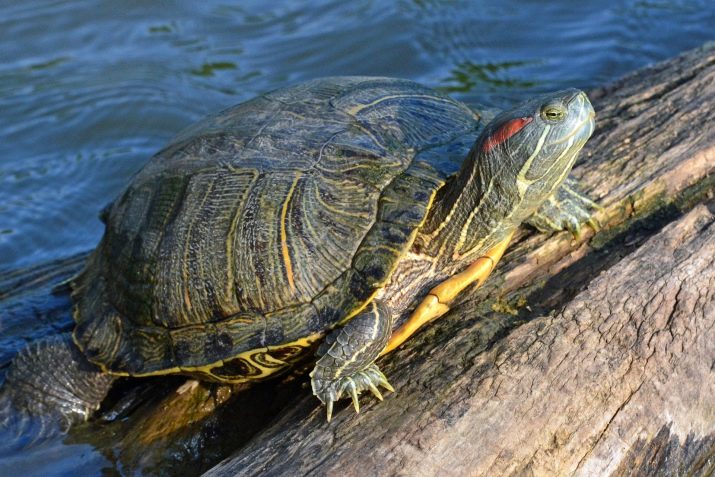
How long can an adult be without water?
Adults can survive for 1 to 3 days without water. In favorable conditions, red-eared turtles live for over 20 years. Poor environment and stress can significantly shorten their lifespan.
The most dangerous phenomenon is the lack of water. Without it, a reptile can live only a couple of hours without health problems. To prevent anything from happening to your pet, you must make sure that it is not exposed to extreme conditions.
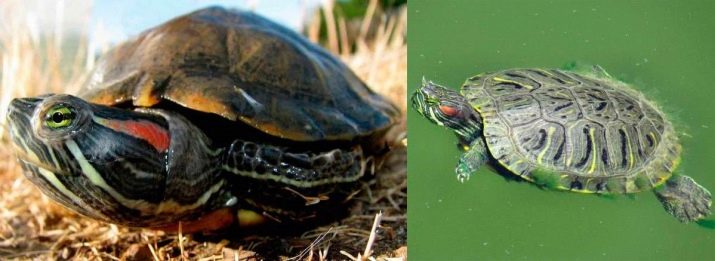
Creation of optimal conditions
Let's figure out how to equip land and an aquarium at home so that your reptile does not leave the water unnecessarily, then getting stuck on land for various reasons.
Arrangement of the aquarium
Experts recommend allocating at least 140 liters for one individual. Even if you keep a small red-eared turtle, you will soon need to purchase a large tank. After some time, your turtle will grow up, it will become uncomfortable in a small aquarium. In this case, you will have to spend money on replacing the reservoir and purchasing additional accessories. Keeping a red-eared reptile in a small aquarium will cause the carapace to bend severely.
Experts point out that the temperature of the water in the aquarium should be between 25 and 27 ° C. At low temperatures, the turtles become even slower, they eat less. They, in addition, can get sick or go into hibernation.
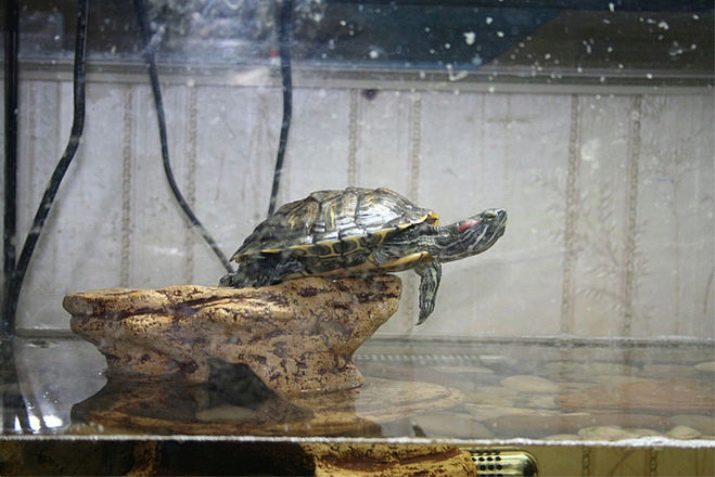
The depth of the tank should be at least 40 cm. This is the recommended level that allows the adult to roll over from back to stomach without touching the bottom of the tank.
Remember to change the water periodically. A musty smell is often caused by dirty water. Turtles usually eat and defecate in water. If the water is very dirty, your pet will leave it more and more often, which negatively affects his health. To keep the tank clean for longer, owners should train their turtle to only eat on land.
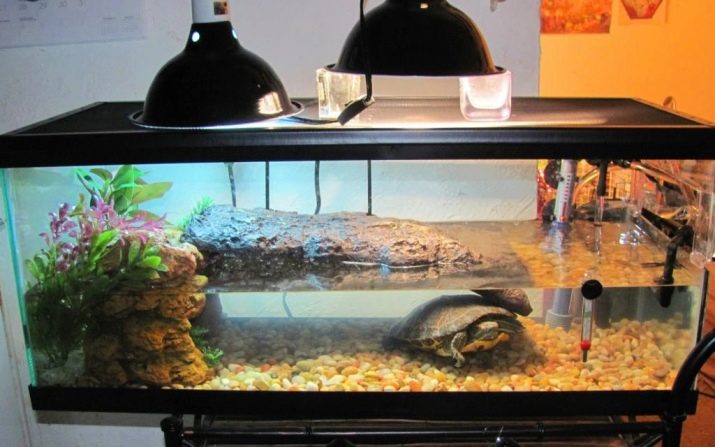
Sushi arrangement
Dryness should be at least 30% of the total volume of the tank. You can build land in two levels: the first will partially remain under water, and the second - above it.
Make sure your turtle is comfortable diving in and out of the water. The turtle should climb onto the island without any problems, so as not to freeze, and freely descend back into the water.
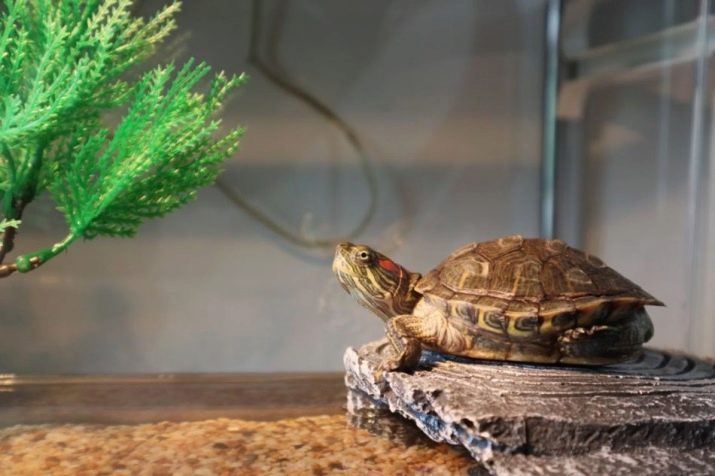
What if the turtle escaped from the aquarium?
Let's take a look at what measures need to be taken if you haven't found a turtle in the water:
- First, place a bowl of water and a bowl of your favorite food next to it. There is every chance that clean water without foreign odors will be able to interest the turtle, and even more so its favorite food. Reptiles have excellent eyesight, so they can find treats from a distance.
- If the turtle is still not found, and more than 2 hours have passed since the moment of loss, then fill several shallow containers with water and place them in different places, for example, in a dark corner, under an armchair, under a shoe rack or under a table so that the turtle can find the nearest dishes with water and stay in it.
- If the turtle does not appear for a long time, it is recommended to search all dangerous places. This must be done without fail, because your pet can simply fall into a "trap", even if he is actively moving and overcoming obstacles.
- The reptile may just be hiding in a quiet corner. With active search, you may encounter it, but not notice. If the turtle sees an approaching person, it starts making whistling or clicking sounds.
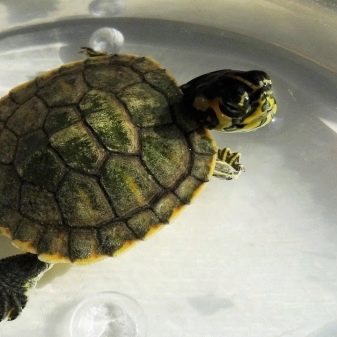
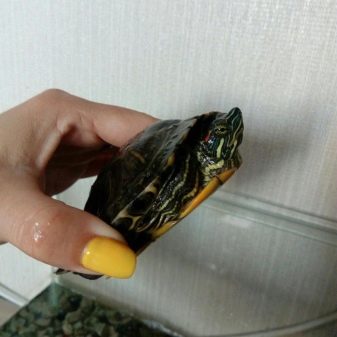
First aid
If a mature turtle fails and falls on its shell, it is very difficult for it to stand up on its own, especially if there are obstacles nearby. Consider what to do if the reptile has been on land for a long time.
- Examine the turtle carefully. Take it in your hand and study it carefully for cuts or injuries.
- Remove dirt, dust and hair from your pet. The turtle can hide behind furniture or in other - not too clean - places, which will certainly affect its shell and paws.
- Place the pet in water after cleaning the dirt.
- Connect the heating lamp. When the air temperature is below 22? turtles cease to be active, they can catch colds and hibernate. It can be much cooler in the apartment than inside the aquarium.
- Give food to your pet. Keeping dry for extended periods of time can be stressful for turtles. They need to be fed to help them grow stronger and cope with the stress they have endured.
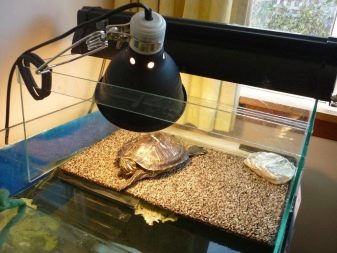
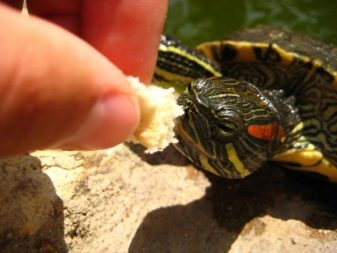
Consequences of prolonged stay on land
When you find a water turtle, you need to get a good look at it. Without hydration, there is a risk of skin problems (it becomes dry and begins to flake off).
When the lack of water lasts for several hours, both the shell and the skin are affected, with negative health consequences. Under these conditions, the shell will begin to flake off, damaging the delicate skin, causing microscopic cracks in it. The latter will take a long time to heal.


Depending on how long the turtle has been away from water, cracks can appear immediately or after a certain amount of time. This is why regular checkups of your reptiles should be done.
Besides, diseases of the shell can occur: prolonged absence of water often leads to its delamination. This can be a breeding ground for mold or infections. Infection can cause inflammation and dangerous illness.
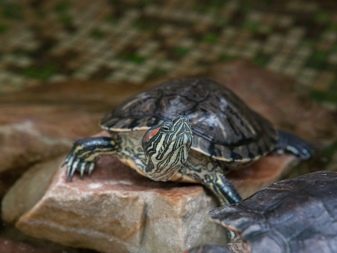

Useful Tips
Here are some tips for turtle owners looking to go on the run:
- Do not place the aquarium in direct sunlight or in a draft.
- Stabilize water and air temperature.
- After feeding, remove any food debris so that the water does not smell bad.
- If you do not have a special filter, change the water in the vessel every 2-3 days.
- Wash your turtle in warm water using a soft brush, which makes it easier to remove dirt and algae from the shell.
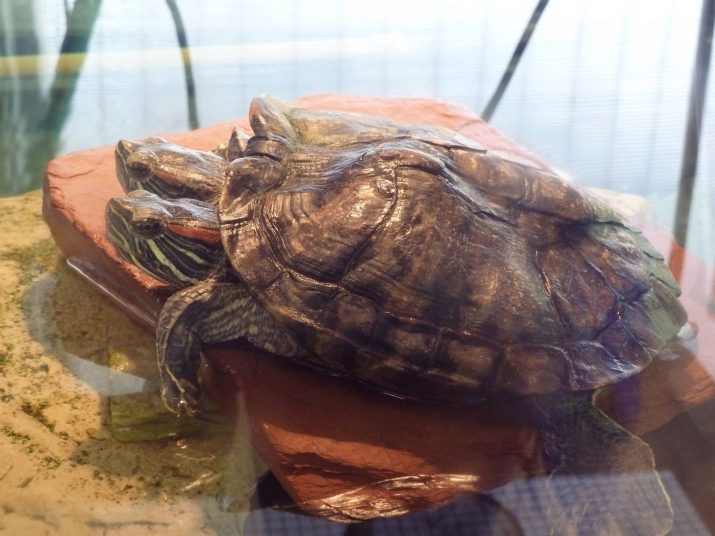
To keep your turtle healthy, do not leave it out of water for long. If she does run away, find and return her to her usual habitat as soon as possible.








